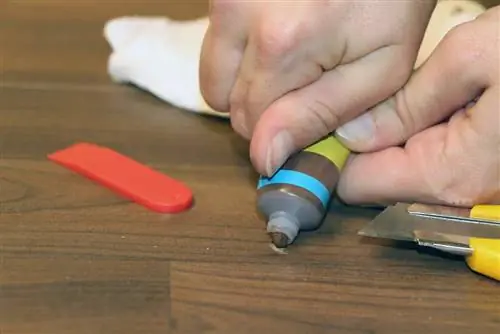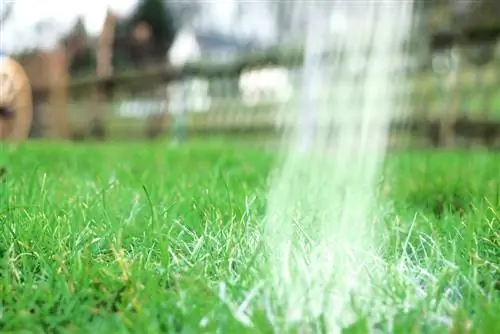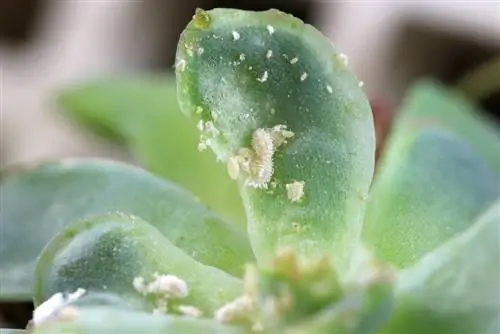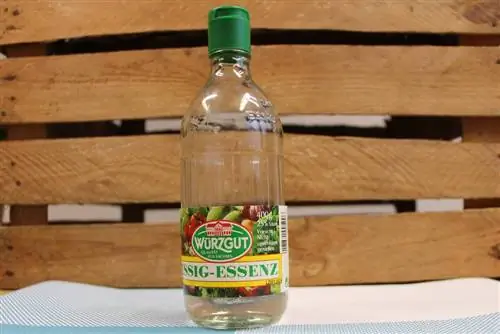- Author admin [email protected].
- Public 2023-12-17 03:39.
- Last modified 2025-01-24 12:45.
Scratches in laminate are an annoying matter, after all, such a plastic floor cannot simply be sanded down and repainted like parquet. You can at least remove superficial damage with a few home remedies, as our seven tips show. In the case of deep scratches, however, the only solution is often to replace the damaged panels, provided it is modern click laminate.
Prevention is better than repair
Laminate flooring has a serious disadvantage compared to real wooden flooring: If it is damaged, it cannot simply be sanded down and repainted. After all, it is a plastic floor that is difficult to invisibly repair if damaged - unless it is a superficial, light scratch. For this reason, preventive measures make sense to keep damage as low as possible:
- Use high-quality laminate from stress class 23 and higher
- lay out runners and carpets on frequently used paths
- Glue felt pads under chair, table and furniture legs
- Use special floor protection mats for heavy furniture and rolling furniture
- Clean laminate flooring correctly: only slightly damp, not wet and with a splash of vinegar cleaner in the wiping water
Remove minor damage to laminate flooring
But whatever you do: Over time, scratches cannot be avoided. This is part of the normal wear and tear on the laminate floor, after all, you certainly don't want to constantly tiptoe around your own apartment for fear of it. This is usually minor damage that only remains superficial and has not penetrated into the deeper layers of the laminate.
You should definitely treat this, even if you don't find it visually disturbing. These scratches, no matter how small they are, can have serious consequences: If the protective layer is damaged, moisture penetrates into the deeper layers of the laminate when cleaned with a damp cloth. This in turn causes the floor to swell and become unsightly uneven.
Natural home remedies help with superficial scratches
But you don't have to run to the hardware store because of a small scratch. Instead, all you have to do is reach into the kitchen cupboard, because most people have the essential ingredients for a natural repair kit at home anyway.
Olive oil / cooking oil
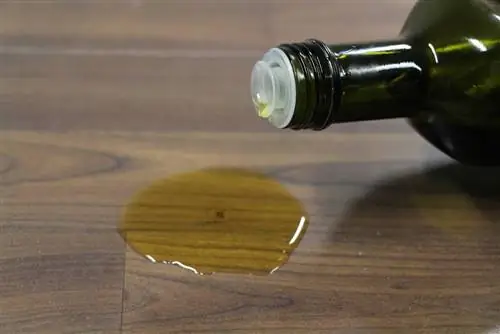
The top layer of the laminate - the so-called decorative layer - is made of plastic, which is usually made from cellulose. Another component is petroleum, which is why small scratches can be easily sealed with an oily lubricant. Plain olive oil works great for this purpose:
- Clean the floor thoroughly from dust and dirt particles.
- However, only wipe slightly damp, not wet.
- Let the floor dry thoroughly.
- Put a few drops of olive oil on the scratch.
- Polish the area gently with a clean cotton cloth.
- Repeat the treatment until you are satisfied with the result.
Instead of olive oil, you can basically use any other oil. Baby oil or another cooking oil such as sunflower or rapeseed oil have also delivered good results. For dark laminate floors, you should use walnut or linseed oil, as these naturally provide the right color.
Caution
The oily scratch treatment makes the floor very slippery for a few days. However, this only lasts until the oil is completely absorbed. During this time, avoid walking over the treated area if possible or wear non-slip socks or shoes.
Beeswax
A treatment with beeswax also delivers very good results. This home remedy is also absorbed more quickly and leaves a less slippery floor. Heat the wax - for example from a beeswax candle - and fill it in liquid form into the scratch. Spread it with a spatula or a similarly suitable device. Allow the wax to harden and then polish it carefully.
Light or dark shoe polish
Simple shoe polish can also be used for repair purposes as long as the color matches. It's best to check beforehand in an inconspicuous area whether the color of the care product actually matches that of the floor. Of course, a colorless leather care product made from hard wax (e.g. beeswax or carnauba wax), which generally matches all laminate colors, would be perfect. Thorough polishing with a soft cloth also ensures the right finish in this case.
Walnut kernels
If you want to repair a dark laminate floor, you can try this tip: Crack a walnut and rub a kernel (without a shell!) over the scratch several times. The nut particles fill it into the smallest crack and, if it is only on the surface, make it disappear almost invisibly. But be careful: walnuts have a strong coloring effect and are therefore only suitable for really dark floors.
Repair kits from the hardware store
Practical repair kits that contain all the necessary materials and tools for restoring the damaged laminate floor are available at hardware stores for little money.
Floor repair set with hard wax
Such a set costs around EUR 25 and contains several hard wax sticks in different colors, a wax melter as well as a plane, spatula, sanding sponge and polishing cloth. The application is very simple: The wax is made lubricable with the battery-operated wax melter and filled into the damaged area with the spatula. Depending on the color of the laminate, different colors can be mixed so that you can achieve the most inconspicuous result possible, even in the case of larger damage. After drying, scrape off excess wax with the spatula, clean and polish the area.
Tip:
If you don't have a wax melter at hand, a simple soldering iron will also work.
Repair paste
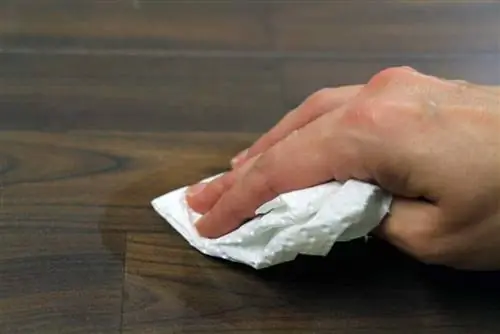
Sets with repair paste and individually configurable color pigments also work according to a similar principle as described. Here too, the cost ranges between around 20 and 25 euros.
Retouching pens / repair spray
Small, superficial scratches can be treated with a retouching pen (sometimes called a furniture pen) or a repair spray. These products are easy to use and only cost a few euros, but they have a limited color spectrum and are also not very durable. Therefore, if possible, only use them in rarely frequented places where you don't walk often or where there is little wear and tear from furniture, etc. Before treatment with repair pens or spray, the affected area should be cleaned, dried well and lightly roughened for better adhesion.
What to do if there are deep scratches in the floor?
Of course, the home remedies mentioned can only help with superficial scratches. However, if the damage is deeper, the only solution is often to replace the damaged area. The easy-to-lay click laminate is practical at this point; if the worst comes to the worst, you only need to remove the damaged panels and replace them with undamaged ones. However, since in most cases the areas of damage are not at the edge but in the middle of the room, you usually have to remove all panels in a row - otherwise you will not be able to get to the area that needs to be replaced. Make sure you remember the order in which you inserted the panels and put them back in the same way.
Tip:
If the damage only occurs years after purchase, the laminate is often no longer available. So that you have access to the right material in the event of repairs, you should order any replacements when installing and store them in their original packaging in a dry and dark place.
What to do if there are dents in laminate flooring?
Sometimes the problem is less the scratches than more or less pronounced dents in the laminate floor. These occur, for example, when heavy pieces of furniture are left in the same place for a long time or the floor is swollen due to mopping that is too wet. You can iron the covering smooth again with an iron:
- Wet the dent well.
- Turn the iron on to the highest setting.
- Now hold it repeatedly over the dented area.
- But always only briefly and definitely not directly on the floor!
- Steam irons are particularly suitable.
Tip:
The iron trick can also be used to remove dents and pressure marks on parquet in no time.

